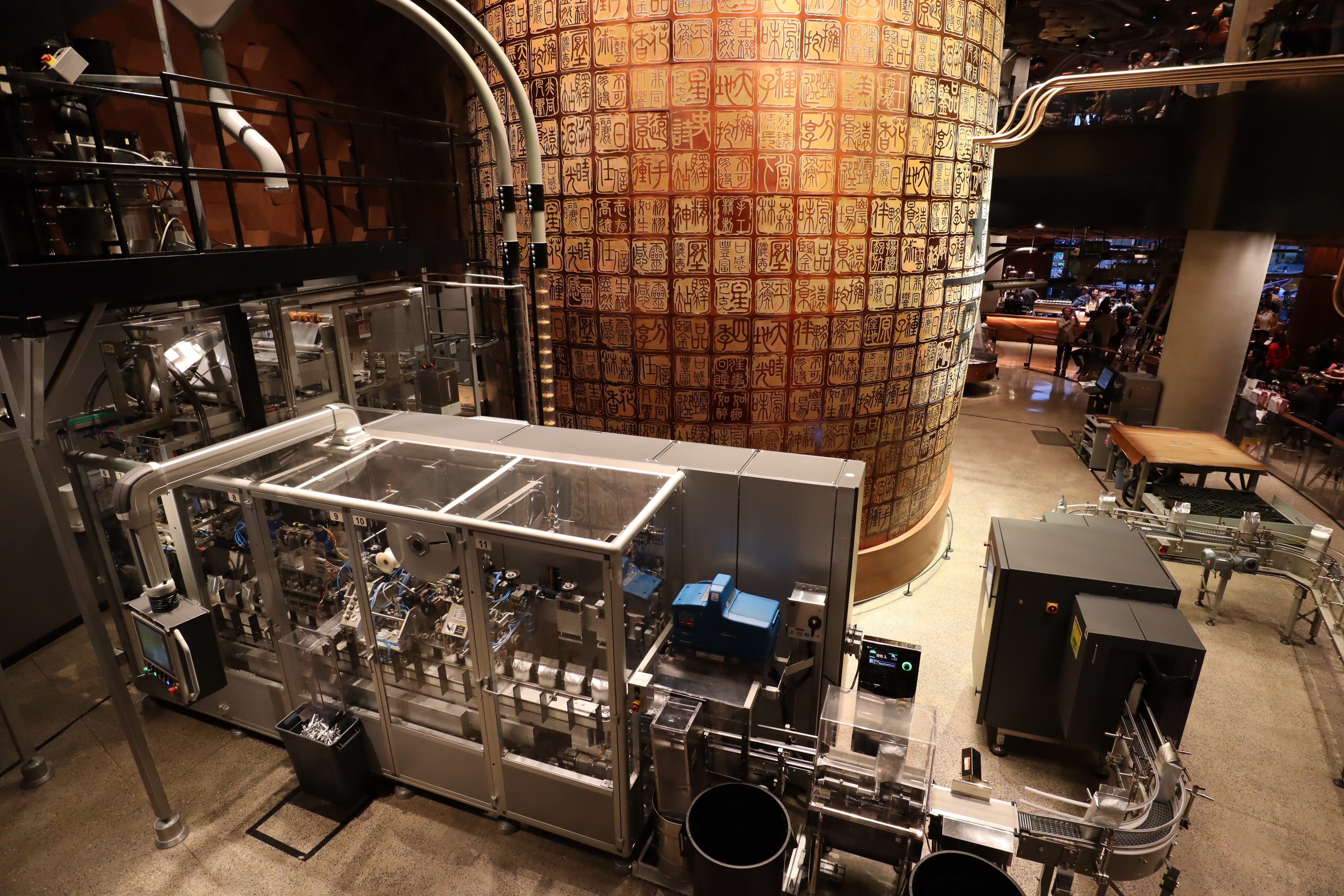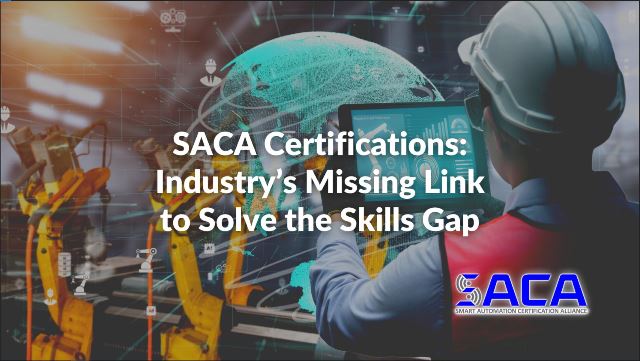Identifying specialists within the Industrial Internet of Things (IIoT).
Supply chain issues persist within the global manufacturing industry. Although nimble companies have found ways to navigate the issues brought about by COVID19, experts still anticipate concerns continuing through 2022, caused by the lingering effects of the pandemic and other global events.

One of the most pervasive issues stems from the reality that domestic manufacturing relies heavily on components made in other countries. While efforts are being made to mend this, in particular attempts to re-instate the component manufacturing industry in the US, it’s clear that this industry will reemerge in a different way with a focus on mechanization and automation.
The foundation of a long term strategy to mitigate these problems in the future will involve leveraging the Industrial Internet of Things (IIoT), which presents a groundbreaking opportunity for data capture at each step of a manufacturing process.
This extensive study by Inmarsat indicates that many manufacturing companies are either already using or anticipate using IIoT to enhance their productivity. A smart factory can track all elements of the production chain and communicate information and even anticipations within the network.

In addition to valuably capturing data, a smart-automation chain can perform pre-emptive actions based on the needs of the incoming workload; for example submitting a work-order for components required on the production line, utilizing a company’s secure industrial WLAN.
Unlike residential (or office) WiFi, an industrial system transfers small amounts of data, and as such requires a small amount of power but must remain uninterrupted. Knowledge of the specificities of these systems is essential to optimize an efficient order-to-customer pipeline.
Because of innovations like re-programmable robots and even rent-a-bot companies emerging, there is much less danger of expensive built-in obsolescence and more opportunity for network, automation and programming specialists within manufacturing companies.

Companies searching for highly-skilled workers to ease their supply chain disruptions want to make sure that potential employees actually have the skills to excel without significant additional training. That’s why industry-standard certifications are important for supply chain workers. They provide employers with evidence that a worker has the knowledge and hands-on skills to work with today’s advanced technologies.
Industrytoday.com states that ‘new developments in automation are allowing small manufacturers to meet demand while helping with American competitiveness’. Today’s workers need more advanced technical and technological skills than ever before. Unfortunately, there aren’t enough workers with these skills to fill the many roles available today, creating what is known throughout industry as the “skills gap.” Modern businesses must ensure that their workers have up-to-date, relevant accredited skills. How can companies be sure that their employees are at the correct skill-level?
The Smart Automation Certification Alliance (SACA) focuses on connected-systems skills and leads the effort to certify students and workers who demonstrate the required knowledge and hands-on smart automation skills employers so desperately need. SACA professional development opportunities provide extensive training courses to equip teachers to promote Industry 4.0 certifications. These professional development opportunities are offered throughout the year at regional centers. Courses last 3-5 days each. Upon successful completion of each course, teachers will be certified in the process of examining students for a given credential and administrating a certification preparation course.
To learn more about Industry 4.0 certifications and how SACA can help both educational institutions and industry employers begin the task of bridging the Industry 4.0 skills gap, contact SACA for more information.
Header Photo by Denny Müller on Unsplash
- Published in News
Micro-Credentials Pave Micro-Pathways to Career Success
There are many new forms of advanced, “connected” technologies that characterize what’s commonly known as Industry 4.0. These technologies, as a group, also go by a variety of monikers, including Smart Factory and the Industrial Internet of Things (IIoT).
Today’s workers need more advanced technical and technological skills than ever before. Unfortunately, there aren’t enough workers with these skills to fill the many roles available today, creating what is known throughout industry as the “skills gap.”
That’s why the Smart Automation Certification Alliance (SACA) partnered with a wide variety of educational institutions and industry leaders to develop a set of Industry 4.0 certifications for a range of industries. These credentials were developed in conjunction with industry to ensure that they represent the job-ready skills that employers desperately need today.
SACA designed many of its certifications in a modular format, so that workers could earn stackable micro-credentials that will enable them to start a successful career before earning a full certification. A recent report by an educational nonprofit organization underscores the importance micro-credentials can play in creating micro-pathways to career success.
In this article, we will take a closer look at examples of educational institutions that are partnering with local industries to create micro-pathways based upon micro-credentials to put workers on a fast track to a new career.
What are Micro-Pathways?
The Education Design Lab (the “Lab”), “a national nonprofit that co-designs, prototypes, and tests education-to-workforce models” recently published a groundbreaking report on its latest efforts: Design Insights Brief: Community College Growth Engine Fund Micro-pathways: A Gateway to Community College Transformation (the “Brief”).
The Brief describes the launch of the “Community College Growth Engine Fund (CCGEF or the Fund, for short) – a design accelerator to work with community colleges and systems across the country to co-create a new class of credentials: micro-pathways. Co-designed with learners and employers, micro-pathways are defined as two or more stackable credentials, including a 21st century skill micro-credential, that are flexibly delivered to be achieved within less than a year and result in a job at or above the local median wage.”
The first CCGEF group of community colleges/systems included SACA members Ivy Tech Community College (Indiana) and Pima Community College (Arizona), as well as Seattle Colleges, the City University of New York, Prince George’s Community College, and Austin Community College.
Together with the Lab, these organizations developed 30 new micro-pathways over the past two years across a variety of industries. For example, relevant micro-pathway occupations targeted included the following: industrial engineering mechanic, electrician, HVAC technician, cloud associate, electro-mechanical manufacturing technician, cybersecurity professional, and entry-level data analyst.
Micro-Pathways Satisfy Both Learner and Employer Needs
During the development of these new micro-pathways, educational institutions and industry leaders gained valuable insights into how micro-credentials and targeted training satisfy both learner and employer needs. For example, they learned that students “need practical pathways with a clear return on investment (ROI).” Helping learners to understand the value they gain compared to their investment of time and money is essential.
Learners also “need flexible micro-pathways that meet them where they are in their journey.” In the wake of an ongoing global pandemic, it’s more important than ever to offer micro-credentials that offer “flexibility in format and timing as well as recognition of their life and work experiences.”
Importantly, they learned that students also “want and need deeper and more extensive work-based learning.” Starting and building relationships with employers via immersive experiences can put students on the fast track to career success. It also helps employers who “need learners to have work-based learning experiences,” such as internships, part-time jobs, school projects, or even volunteer projects.
Working closely with educational institutions also taught employers that “the micro-pathway co-design process [is] transformative to deepening their relationships with community colleges.” Not only does the process result in the creation of a pipeline of new skilled talent, but it also allows them “to provide input on an ongoing basis” as their needs evolve and change.
Finally, the process revealed that employers “strongly value training and credentialing for 21st century skills like communication, critical thinking and intercultural fluency.” Even as advanced technologies transform the workplace, these critical soft skills remain incredibly important to employers.
SACA Offers a Wide Variety of Micro-Credentials to Facilitate Micro-Pathways
How can your educational organization develop its own micro-pathways to student career success? The process begins by forging partnerships with local industries to determine the types of jobs they need to fill and what skills those roles require.
With a solid industry-education partnership forming the foundation of your effort to create new micro-pathways for your students, you can then choose the right micro-credentials to validate the skills employers are seeking. Fortunately, you don’t have to recreate the wheel.
SACA offers a wide variety of micro-credentials to facilitate micro-pathways to successful new careers for students. For example, here are just a few of the subject matter areas in which SACA offers micro-credentials: electrical, motor control, programmable controllers, mechanical, pneumatics, hydraulics, automation, Industry 4.0 technologies, robotics, electronic sensors, smart factory operations, process control, Ethernet communications, networking, data analytics, and predictive maintenance.
The Smart Automation Certification Alliance (SACA) sits at the forefront of the effort to certify students and workers who demonstrate the required knowledge and hands-on smart automation skills employers so desperately need. To learn more about Industry 4.0 certifications and how SACA can help both educational institutions and industry employers begin the task of bridging the Industry 4.0 skills gap, contact SACA for more information.
- Published in News
SACA Certifications: Industry’s Missing Link to Solve the Skills Gap
It’s no secret that industries of all kinds are battling a serious supply and demand issue. Due to advancing technology and increasing use of automation, employers need more highly-skilled workers than ever before.
Unfortunately, the supply of workers with the advanced technical and technological skills employers need isn’t keeping pace. This well-known problem is known as the “skills gap.” It’s been a problem for a while now, and experts believe it will only get worse in the near future.
What employers need are workers with advanced “connected systems” skills that will help them operate, maintain, troubleshoot, and repair the automation equipment becoming commonplace in facilities that have adopted new Industry 4.0 technologies.
To date, however, industry and educators alike have been missing the key to solve this skills gap: a set of industry-defined and industry-validated standards that clearly define the skills workers will need to succeed in the jobs of the present and future.
Providing that missing link was the guiding vision behind the creation of the Smart Automation Certification Alliance (SACA). In a recent webinar (“SACA Webinar”) hosted by Matt Kirchner, President of Lab Midwest, representatives of several major manufacturers spoke about their role in the development of SACA’s Industry 4.0 skill standards, as well as how those standards are now guiding their training and education efforts.
SACA’s Vision for Industry 4.0 Certifications
Why are SACA’s Industry 4.0 certifications so valuable? They speak to the in-demand skills that employers across the country — and across the globe — need so desperately.
Not only do the nation’s educational institutions need to build a pipeline of skilled talent to supply employers with the highly-skilled workers they need now and in the future, but incumbent workers also need training to learn the new skills they need to work with the advanced Industry 4.0 automation systems taking over modern manufacturing facilities.
But what are those skills? That’s the key question, and answering that question is what brought SACA into existence. According to SACA’s Executive Director, Jim Wall:
“SACA’s vision from the beginning was to develop a system that’s based upon industry-developed, industry-validated standards that truly define the competencies, performance indicators, and knowledge indicators that are required of individuals to succeed in the world of Industry 4.0.”
To turn that vision into reality, SACA relied upon a wide variety of companies, educational institutions, and organizations to develop, review, and test SACA certification standards. Experts from well-known industry leaders, such as Rockwell Automation, FANUC, Ashley Furniture, Kohler, Foxconn, Boeing, and Hershey, were instrumental in making sure SACA’s Industry 4.0 certifications reflect the competencies that industry needs.
Industry 4.0 is Here to Stay
Several of the industry representatives who shared stories during the SACA Webinar spoke about the changes that Industry 4.0 technologies have wrought and how their companies have been forced to respond.
Al Doty, Advanced Manufacturing Chief Engineer for Harley-Davidson, Inc., revealed that automation has been key to his company maintaining a competitive edge. Not only do new technologies improve efficiency and reduce costs, but Doty noted that employees also expect the company to adopt and use the best technologies available, so that they can perform their jobs more effectively and maintain a positive work-life balance.
Specific new technologies being adopted include advanced robotics and digital twins, according to Scott Theune, President of Plexus. Digital twins are realtime digital counterparts that allow workers to troubleshoot equipment virtually.
In addition to improving efficiency, these new technologies also play a critical role in making manufacturing facilities safer. Improved safety has been a big benefit as industry growth and the skills gap has spurred the need for more automation, noted Andrew Martin, Senior Director of Manufacturing for Generac.
Leaders throughout industry agree: Industry 4.0 is here to stay. According to Michael DeBroux, Senior Mechanical & Automation Engineer and Engineering Supervisor of Greenheck Fan Corporation, “We need to make sure that we are getting personnel and new talent into our company that speaks modern manufacturing languages and is familiar with Industry 4.0 fundamentals.”
OT and IT are Converging in Industry 4.0
According to an i-SCOOP article, “It’s impossible to talk about the evolutions in manufacturing, industrial transformation and Industry 4.0, innovations in areas such as Industrial IoT without mentioning the convergence of IT and OT.”
Historically, operational technology (OT) has referred to “a category of computing and communication systems to manage, monitor and control industrial operations with a focus on the physical devices and processes they use.”
Information technology (IT), on the other hand, “is about business and enterprise systems that store, process and deliver information.” Because Industry 4.0 technologies are becoming more and more commonplace throughout traditional OT equipment, cybersecurity becomes more critical every year.
According to Jim Molter, IT Manager – Smart Factory Deployment of Kohler Co., “Industry 4.0 is forcing us to break down those silos and start to learn to work together…that’s where we’re headed. There’s not going to be a distinction [between OT and IT] anymore.”
Educational Institutions Play a Key Role in Preparing Industry 4.0 Workers
When experts evaluate strategies for bridging the skills gap, it’s clear that educational institutions must play a key role in preparing students for Industry 4.0 careers. But can they do it alone?
The answer is no. Educational institutions must partner with industry counterparts to ensure that the knowledge and skills they’re teaching will produce students with the valuable skills that industries around the country need.
Anne Troka, Community Engagement Manager for Sargento Foods Incorporated, explains a successful approach she helped to develop called Manufacturing 4.0:
“We started conversations with…four schools and four businesses [to] build a partnership to help students — our future workforce — connect with our businesses to really get skills that we need and skills that the students will need…to make them employable in a variety of different careers, because Manufacturing 4.0 is in manufacturing as well as many other industries.”
To date, the partnership has helped to design and build five courses to prepare students for Industry 4.0 careers, including subject areas like mechatronics, industrial controls, robotics, and the Internet of Things. Eventually, students will also be able to earn SACA certifications related to their coursework. In this way, “we’re really connecting education to [career] success,” concludes Troka.
Industry 4.0 Also Requires Upskilling Current Employees
Unfortunately, employers can’t wait for the next generation of highly-skilled workers to emerge from high school or college. As Anthony Ebio, Director of Industry 4.0 Learning for Ashley Furniture Industries, Inc., noted, schools simply aren’t “cranking out the learning and the students fast enough.”
That’s why Ashley Furniture has invested heavily in upskilling its current employees so that they have the advanced skills they need to work with new Industry 4.0 technologies. Ebio noted that they used SACA certifications as a guide when setting up training for incumbent workers: “We found ourselves leveraging a lot of the SACA structure to make sure that we have [curriculum] to support Industry 4.0.”
Other companies are following suit. Ken Evans, Associate Maintenance Manager for S.C. Johnson & Son, Inc., noted that S.C. Johnson has partnered with Gateway Technical College to upskill its employees with an eye toward achieving SACA certifications.
So far both young and older employees have been excited about the prospect of learning and gaining new skills. Plus, using SACA certifications as a guide has allowed current employees to see a payoff for their hard work quickly. According to Evans, “under SACA, [current employees] can get incremental steps of recognition and be proud of it, and we’re proud of them.”
SACA Brings It All Together
If the current skills gap plaguing industries across the world is to be bridged, strategic partnerships between industry and educational institutions must be forged. Schools must begin to produce a pipeline of highly-skilled workers ready to work in an Industry 4.0 environment.
Likewise, industry must upskill its current workforce with the advanced skills needed to operate, maintain, troubleshoot, and repair the Industry 4.0 automation technologies taking over the factory floor.
According to Michael Cook, Director of Global Academic Partnerships for Platinum SACA Sponsor Rockwell Automation, Inc., “no one company can really do this alone…SACA is providing significant leadership here…ensuring that there’s a close fidelity between the academic space as well as what we find relevant in industry. That alignment is a significant part of what SACA brings.”
To learn more about Industry 4.0 certifications and how SACA can help both educational institutions and industry employers begin the task of bridging the Industry 4.0 skills gap, visit the SACA website and then contact SACA for more information.
- Published in News





